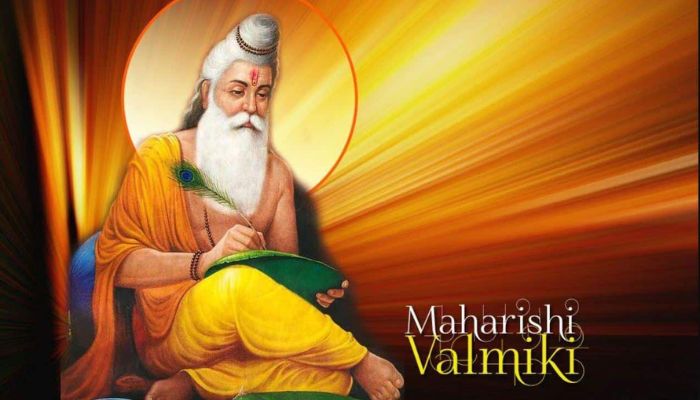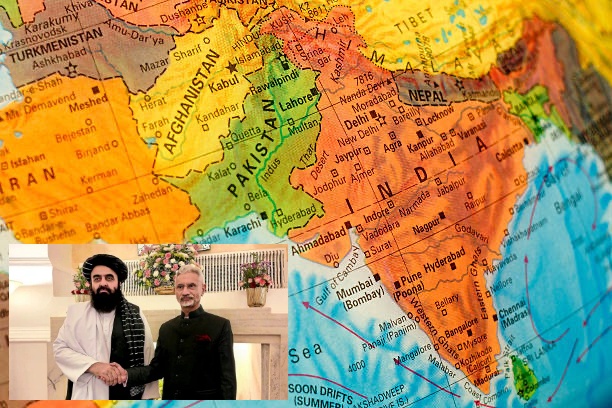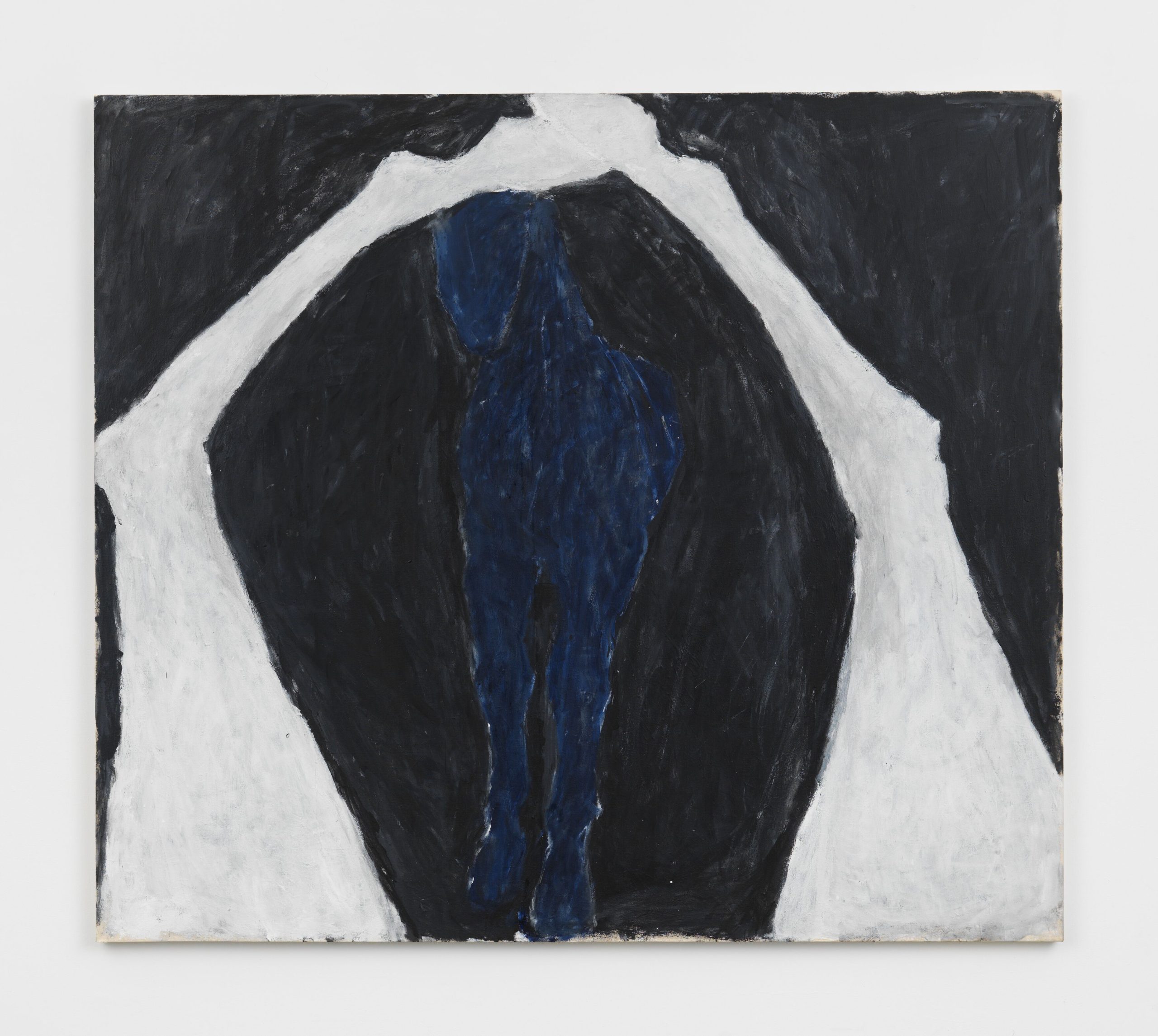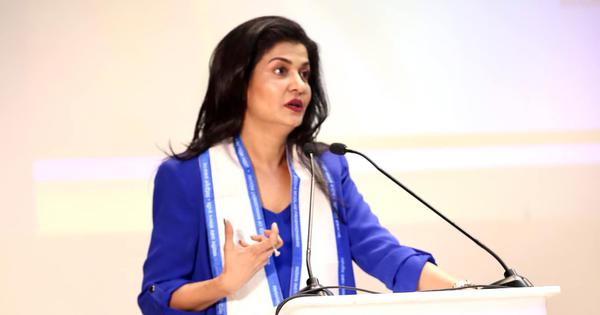As Punjab police lodge case against journalist Anjana Om Kashyap over comments on Maharishi Valmiki, read what scriptures reveal about the past of the Hindu sage
The Ludhiana Police lodged an FIR against Aaj Tak anchor Anjana Om Kashyap and India Today Group chairman and editor-in-chief Aroon Purie, and the media company Living Media India Limited (India Today Group). The case was registered upon complaints filed by members of the Valmiki community that the journalist had used insulting language for Saint Valmiki during one of her programmes. The complaint was filed by the Bharatiya Valmiki Dharam Samaj (BHAVADHAS), a community organisation that said Kashyap’s comments were “deeply insulting” and hurt the sentiments of Valmiki devotees across India. The organisation said that the remarks were made during a show aired on Aaj Tak’s official social media handles, including Facebook. Responding to the allegations, Anjana Om Kashyap and the India Today Group have denied any wrongdoing. In a statement, Kashyap said, “TV Today Network Limited strongly denies the allegations made in the FIR registered in Ludhiana about derogatory remarks regarding Bhagwan Maharishi Valmiki Ji. The programme in question was respectful and balanced, conducted in full adherence to journalistic ethics and with complete respect for all faiths and communities.” FIR filed against Aaj Tak anchor Anjana Om Kashyap in Punjab's Ludhiana for allegedly insulting Maharishi Valmiki during a TV debate. pic.twitter.com/gz0qMqJisn— ηᎥ†Ꭵղ (@nkk_123) October 12, 2025 The centuries-old debate around Maharishi Valmiki’s life For centuries, the biography of Maharishi Valmiki, the author of the Ramayana and among India’s greatest sages, has been filled with myth, reverence, and controversy. The Adikavi, his name and fame are established deep within the Indian religious and cultural consciousness. It is believed that Maharishi Valmiki was a dacoit who later became a sage. It still generates debate among historians, scholars, and followers even today. The tale of Valmiki is not limited to India alone. Across several South and Southeast Asian countries, the Ramayana continues to be narrated, performed, and revered through traditions like Ramlila. But while his epic poem remains timeless, the question of Valmiki’s early life, whether he was once a bandit, has invited both belief and scepticism. Maharishi Valmiki’s real name appears in most literature as “Agnisarma,” not “Ratnakara.” According to the book written in 1585 by the famous by the popular poet Nabhadas, “Bhaktamal,” Valmiki, who was forced to flee due to famine. He was once a bandit named Ratnakara who lived in a forest and looted travellers to support his family. One day, he tried to rob a group of sages known as the Saptarishis. Among them, one sage, believed to be Atri, asked him a question that changed his life forever: would his family share in the sin of his crimes? When Ratnakara asked them, they refused. Shocked and remorseful, he began to repent. He then went into deep meditation. So long and still was his penance that a mound of termites (valmik in Sanskrit) grew around him. When the sages returned and found him encased in the termites, they named him “Valmiki.” It is said that after this transformation, he devoted his life to spiritual reflection. Later, He worshipped Shiva and composed the “Ramayana.” Some variations of the story replace Atri with Narad Muni and claim that Ratnakar began chanting “Mara Mara”, which over time transformed into “Rama Rama.” However, Sanskrit scholars argue that the word Mara did not exist in that form in ancient Sanskrit, making the tale linguistically doubtful. Despite the popularity of the dacoit tale, ancient texts and scholars suggest there is little evidence to support it. The Ramayana itself, written by Valmiki, contains no mention of him ever having been a bandit. Shri Bhagavatananda Guru has written that Maharishi Valmiki alludes to the Uttara Kanda in the Bala Kanda; thus, it is not an interpolation. In his Uttara Kand, while praising the purity of Mata Sita, Maharishi Valmiki introduced himself to Lord Rama as “the tenth son of sage Pracheta,” saying he has never sinned “in thought, word, or deed.” प्रेचेतसोऽहं दशमः पुत्रो राघवनंदन।मनसा कर्मणा वाचा भूतपूर्वं न किल्विषम्।। Pracheta, according to scriptures, was the son of Lord Brahma, which would make Valmiki Brahma’s grandson. This version strongly establishes Valmiki as a Brahmin sage, not a reformed bandit. The Taittiriya Pratishakhya, one of the Vedic texts, also mentions three individuals named Valmiki, suggesting that the name might have been used more broadly in ancient times. Historians believe this could explain how confusion arose between different figures named Valmiki. The late writer and famous Dalit researcher Omprakash Valmiki, known for his groundbreaking book “Safai Devta,” rejected the popular claim that Valmiki was ever a robber. Citing both linguistic and textual evidence, he argued that the story of Valmiki’s transformation first appeared in a developed form in the Skanda Purana



The Ludhiana Police lodged an FIR against Aaj Tak anchor Anjana Om Kashyap and India Today Group chairman and editor-in-chief Aroon Purie, and the media company Living Media India Limited (India Today Group). The case was registered upon complaints filed by members of the Valmiki community that the journalist had used insulting language for Saint Valmiki during one of her programmes.
The complaint was filed by the Bharatiya Valmiki Dharam Samaj (BHAVADHAS), a community organisation that said Kashyap’s comments were “deeply insulting” and hurt the sentiments of Valmiki devotees across India. The organisation said that the remarks were made during a show aired on Aaj Tak’s official social media handles, including Facebook.
Responding to the allegations, Anjana Om Kashyap and the India Today Group have denied any wrongdoing. In a statement, Kashyap said, “TV Today Network Limited strongly denies the allegations made in the FIR registered in Ludhiana about derogatory remarks regarding Bhagwan Maharishi Valmiki Ji. The programme in question was respectful and balanced, conducted in full adherence to journalistic ethics and with complete respect for all faiths and communities.”
FIR filed against Aaj Tak anchor Anjana Om Kashyap in Punjab's Ludhiana for allegedly insulting Maharishi Valmiki during a TV debate. pic.twitter.com/gz0qMqJisn
— ηᎥ†Ꭵղ (@nkk_123) October 12, 2025
The centuries-old debate around Maharishi Valmiki’s life
For centuries, the biography of Maharishi Valmiki, the author of the Ramayana and among India’s greatest sages, has been filled with myth, reverence, and controversy.
The Adikavi, his name and fame are established deep within the Indian religious and cultural consciousness. It is believed that Maharishi Valmiki was a dacoit who later became a sage. It still generates debate among historians, scholars, and followers even today.
The tale of Valmiki is not limited to India alone. Across several South and Southeast Asian countries, the Ramayana continues to be narrated, performed, and revered through traditions like Ramlila. But while his epic poem remains timeless, the question of Valmiki’s early life, whether he was once a bandit, has invited both belief and scepticism.
Maharishi Valmiki’s real name appears in most literature as “Agnisarma,” not “Ratnakara.” According to the book written in 1585 by the famous by the popular poet Nabhadas, “Bhaktamal,” Valmiki, who was forced to flee due to famine. He was once a bandit named Ratnakara who lived in a forest and looted travellers to support his family. One day, he tried to rob a group of sages known as the Saptarishis.
Among them, one sage, believed to be Atri, asked him a question that changed his life forever: would his family share in the sin of his crimes? When Ratnakara asked them, they refused. Shocked and remorseful, he began to repent.
He then went into deep meditation. So long and still was his penance that a mound of termites (valmik in Sanskrit) grew around him. When the sages returned and found him encased in the termites, they named him “Valmiki.” It is said that after this transformation, he devoted his life to spiritual reflection. Later, He worshipped Shiva and composed the “Ramayana.”
Some variations of the story replace Atri with Narad Muni and claim that Ratnakar began chanting “Mara Mara”, which over time transformed into “Rama Rama.” However, Sanskrit scholars argue that the word Mara did not exist in that form in ancient Sanskrit, making the tale linguistically doubtful.
Despite the popularity of the dacoit tale, ancient texts and scholars suggest there is little evidence to support it. The Ramayana itself, written by Valmiki, contains no mention of him ever having been a bandit.
Shri Bhagavatananda Guru has written that Maharishi Valmiki alludes to the Uttara Kanda in the Bala Kanda; thus, it is not an interpolation. In his Uttara Kand, while praising the purity of Mata Sita, Maharishi Valmiki introduced himself to Lord Rama as “the tenth son of sage Pracheta,” saying he has never sinned “in thought, word, or deed.”
प्रेचेतसोऽहं दशमः पुत्रो राघवनंदन।
मनसा कर्मणा वाचा भूतपूर्वं न किल्विषम्।।
Pracheta, according to scriptures, was the son of Lord Brahma, which would make Valmiki Brahma’s grandson. This version strongly establishes Valmiki as a Brahmin sage, not a reformed bandit.
The Taittiriya Pratishakhya, one of the Vedic texts, also mentions three individuals named Valmiki, suggesting that the name might have been used more broadly in ancient times. Historians believe this could explain how confusion arose between different figures named Valmiki.
The late writer and famous Dalit researcher Omprakash Valmiki, known for his groundbreaking book “Safai Devta,” rejected the popular claim that Valmiki was ever a robber.
Citing both linguistic and textual evidence, he argued that the story of Valmiki’s transformation first appeared in a developed form in the Skanda Purana, which was compiled around the 8th century, centuries after the Ramayana.
According to Omprakash Valmiki, “There is no logical or historical basis to the story that Maharishi Valmiki was once a robber. It appears to be a later addition, not an authentic part of his life.” He explained that many Puranas were edited and expanded over time, with new episodes being added by later authors, and the bandit story might have been one of these interpolations.
Even Punjab and several other parts of India are home to many Valmiki temples, where the sage is worshipped as the spiritual ancestor of the community. Even among the Valmiki diaspora abroad, his image as a poet-saint, not a reformed criminal, is revered.
Further evidence supporting this perspective comes from the work of researcher Dr Manjula Sahdev. In her study of early Indian literature, she found that no text before the 6th century mentions Valmiki as a bandit. Her findings suggest that the image of Valmiki as a dacoit-turned-saint was a much later creation.
Dr Sahdev’s work highlights that the original descriptions of Valmiki portray him as a visionary sage and philosopher who lived by the banks of the Tamasa River, where he composed the Ramayana. Her findings are consistent with a 2008 judgment by the Punjab and Haryana High Court, which acknowledged that there was no historical basis to the claim that Maharishi Valmiki had ever been a dacoit.
However, as modern researchers continue to examine early Sanskrit and Puranic literature, the “dacoit Valmiki” legend appears to have more roots in folklore than in fact.
In Bhaktamal, a devotional text written by poet Nabhadas in 1585, the story of Valmiki as a reformed thief appears in a detailed form, centuries after Valmiki’s era. This timeline further supports the argument that the tale was a symbolic addition to highlight moral transformation rather than a literal biographical detail.
Liladhar Sharma “Parvatiya” writes in his book ” Bharatiya Sanskriti Kosh ” that the sage Bhrigu was also Valmiki’s brother, and both were highly learned. He notes that Valmiki, who is said to have been a bandit, was a different person, and mythological belief holds that he was different from the author of the Ramayana. Some later stories have also been distorted that the bandit Angunlimala, said to have lived during the Buddha’s time, is also often mistaken for Valmiki.
Previous controversies over remarks about Valmiki
The FIR against Anjana Om Kashyap isn’t the first time controversy has erupted over comments about Maharishi Valmiki. Over the years, several celebrities and TV shows have faced legal cases and protests for repeating the story of Valmiki as a dacoit.
In 2017, actress and TV host Rakhi Sawant landed in legal trouble for calling Valmiki a “murderer” during a television appearance. While she said it to make a point about personal transformation, comparing singer Mika Singh’s behaviour to Valmiki’s alleged past, the Valmiki community saw it as a grave insult.
A case was registered under IPC Section 295 for hurting religious sentiments. Protests broke out in Punjab, with community members even stopping a train demanding her arrest.
Reports said a Punjab Police team later travelled to Mumbai to arrest her after a Ludhiana court issued a warrant due to her repeated absence at hearings.
Similarly, way back in 2009, a case was registered against TV channel Star Plus and producers of a serial Bidai, where this story was repeated, even though approvingly. Even though the reference was made positively, activists said it was offensive and misleading. The case is still pending, and activists have vowed to pursue it to the end.
During hearings, the Punjab and Haryana High Court stated that there was “no credible evidence to suggest that Maharishi Valmiki was a dacoit in his earlier life.” The judge noted that “from Vedic literature up to the 9th century AD, there is no reference as such that Maharishi Valmiki led a life of a dacoit or highwayman.”
Apart from these cases, Valmiki community protesters had got the Arshad Warsi starrer The Legend of Michael Mishra banned in Punjab as the movie too had a dialogue that repeated the story about Maharishi Valmiki being a dacoit once.











































































